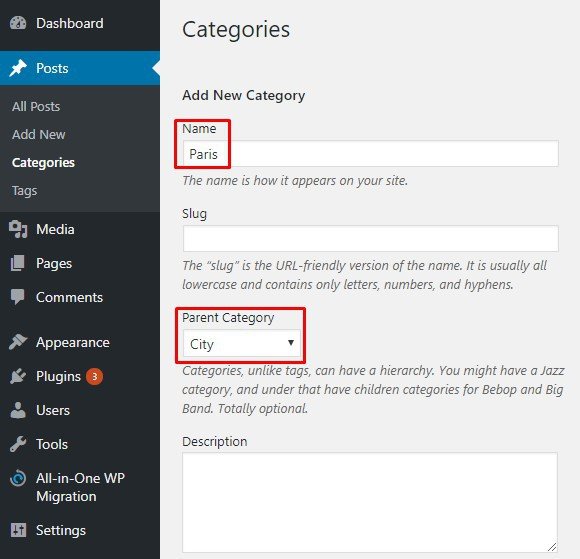Today In this article, we’ll show you, how to make automatically Custom Taxonomies in WordPress sites as well as how to show them in your site single posts/pages or any format. WordPress has been remembered for custom scientific classifications in WordPress variant 3.0 as a central component. WordPress scientific classifications permit you to bunch posts related to something beyond labels and classes. Luckily, WordPress permits putting together your site contents with classifications and labels. This interaction for doing is extremely basic. Step-by-step instructions to make WordPress scientific classifications and update scientific classifications will empower you to more readily sort out your site, and assist site guests with finding what they’re searching for all the more quickly. If you want more information on WordPress custom Taxonomies then do this.
What is a Taxonomy?
On the off chance that you’re involving WordPress as a blog, you’re as of now utilizing scientific categorizations yet you just may not know them by that name.
A WordPress scientific classification is essentially an arrangement of composed data. A WordPress scientific categorization, explicitly, lays out WordPress posts.
We think you found out about WordPress Taxonomies. We have recently attempted to give a straightforward thought regarding WordPress Taxonomies.
On the off chance that you feel that you haven’t gotten an adequate number of thoughts regarding WordPress Taxonomies, read more here WordPress Taxonomies subtleties.
WordPress Custom Taxonomies Using Free Plugin
WordPress classes and labels are magnificent. As the norm of WordPress, there are two different ways needed to make a custom scientific categorization on WordPress Website.
Thus, We will impart to you, how to make custom scientific classifications in WordPress utilizing a Free module. We suggest these modules for the Custom Taxonomies: Custom Post Type UI and Pods – Custom Content Types and Fields. Both modules depend on client surveys and convenience.
WordPress Taxonomy Template
Whenever site guests click on a hyperlink that focuses on a tag, class, or custom scientific categorization, WordPress will show a page of posts that are backward sequential requests, sifted by that specific scientific categorization. The showcase page is created utilizing your index.php format document, naturally. This means you can make a discretionary format document that will refine and abrogate the index.php layout records. Here, we’ll make sense of how you can make and utilize these scientific categorization formats.
Scientific classification Template Hierarchy
The Template Hierarchy is what WordPress uses to decide the request that it shows posts.
The category.php, taxonomy.php, and tag.php formats permit the posts that are separated by scientific classifications to be taken a gander at uniquely in contrast to unfiltered posts or those sifted utilizing an alternate scientific categorization. Recollect that “post” alludes to any post type, like pages, custom post types, or posts. Essentially they’re the records that permit you to target explicit WordPress scientific classifications or scientific classification terms.
Custom Taxonomy Hierarchy
Custom scientific classification ordered progressions work a ton like a tag and class ordered progressions examined previously. WordPress will initially search for scientific classification {taxonomy}-{term}.php. On the off chance that it doesn’t find it, it’ll search for a record that is next in line in the pecking order, which is scientific categorization {taxonomy}.php, etc.
At the point when WordPress doesn’t find any archive.php format records or concentrated layouts, it’ll return to its default conduct utilizing index.php.
The custom scientific classification ordered progression is thusly:
scientific classification {taxonomy}-{term}.php: for instance, assuming that your scientific categorization is designated “charges,” and a similar scientific categorization’s term is “state level,” WordPress searches for the record called scientific classification charges statelevel.php.
scientific classification {taxonomy}.php: for instance, when a scientific categorization is designated “charges,” WordPress searches for the document called scientific classification taxes.php.
The most effective method to Create Taxonomy Template Files
Where do you begin after you conclude that you need to make handcrafts for your substance utilizing scientific classifications?
It’s best not in the first place a clear record. Rather, in the event that it exists, essentially duplicate the following record inside the order.
Expecting that an archive.php is as of now made, make a duplicate and call it category.php. Then, at that point, alter that record to meet your particular plan objectives and requirements. In the event that you don’t as of now have the archive.php record, you can utilize the index.php document in your topic, duplicate it, and use it as your beginning stage.
While making any scientific classification layout document, you can follow similar indistinguishable strategies. Essentially utilize a duplicate of the category.php, index.php, tag.php, or archive.php as the beginning stage.
Read also: center technologies
Custom WordPress Taxonomies
Assuming you take a gander at the right-hand side of your WordPress visual proofreader, you’ll see the name “Classifications” and “Labels.” But imagine a scenario in which you need to have your own custom scientific categorization that says “Specialists,” for instance.
This is where custom WordPress scientific classifications become an integral factor. This capability permits you to alter every one of your scientific classifications to oblige your advancement necessities completely.
For instance, consider a WordPress site for a little neighborhood café. Instead of having a summed-up scientific classification called “Classes,” couldn’t having custom scientific classifications that say “Canapés” and “Primary Dishes be better?”
Then, at that point, every custom scientific categorization can be additionally separated into sub-classes, for example, “Pizza” and “Pasta.” A similar idea applies to label scientific categorizations. You can have labels for things like “Preeminent” or “Lighter Fare.”




